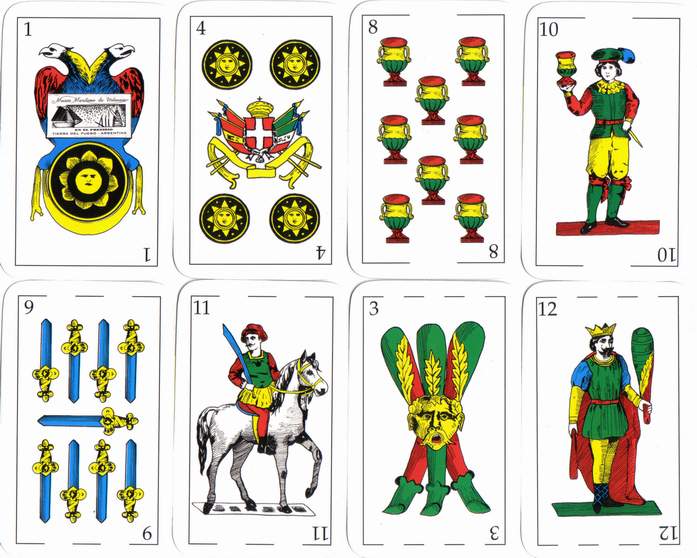Playing Card Collector

| Goal Contact Who Is |
| Research Overview Collecting |
| Trade Statistics FAQ |
| Alta Carta | The Alternative for the Playing Card Collector |
 |
|
|
At a first glance, this might look as a traditional Neapolitan pattern. But already counting its cards, the deck reveals a Spanish flavour: there are 48 subjects instead of the usual 40. The design has been borrowed from the original Napoletane, probably closer to Dal Negro's edition than Modiano's, with some colours (blue) and some extra details added to the ace of Coins. The 4 of Coins usually features all Italian flags in the central decoration, but in this deck the ones on the left have turned into pseudo-Spanish flags (the red/yellow bands should appear vertical, not horizontal, to be real Spanish ones). Numeric indices and frames with continuous or broken lines are typical Spanish details, and also the size and the proportion of the cards is that of a Spanish deck (Napoletane cards are usually slightly smaller). 
Playing cards made in Argentina; the cards measure 95 x 59 mm (Collection: known to the Web-Master) In short, this is a blend of two well-established patterns, the southern Italian Napoletane cards and the Baraja Espaņola (national Spanish deck). Similar hybridizations are not rare in other countries (e.g. Rhineland pattern with Dutch indices, or Berlin pattern with Polish indices, etc.), but this is the first case I am aware of in which an Italian pattern or, more in general, a Latin-suited pattern is involved.
|